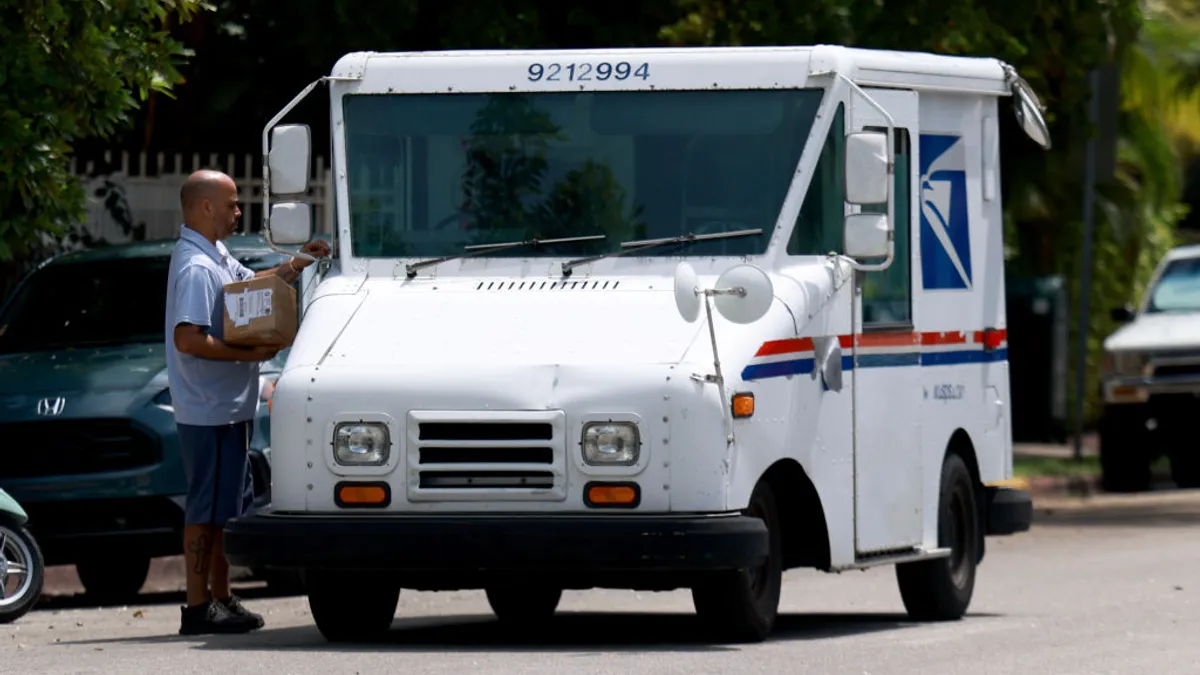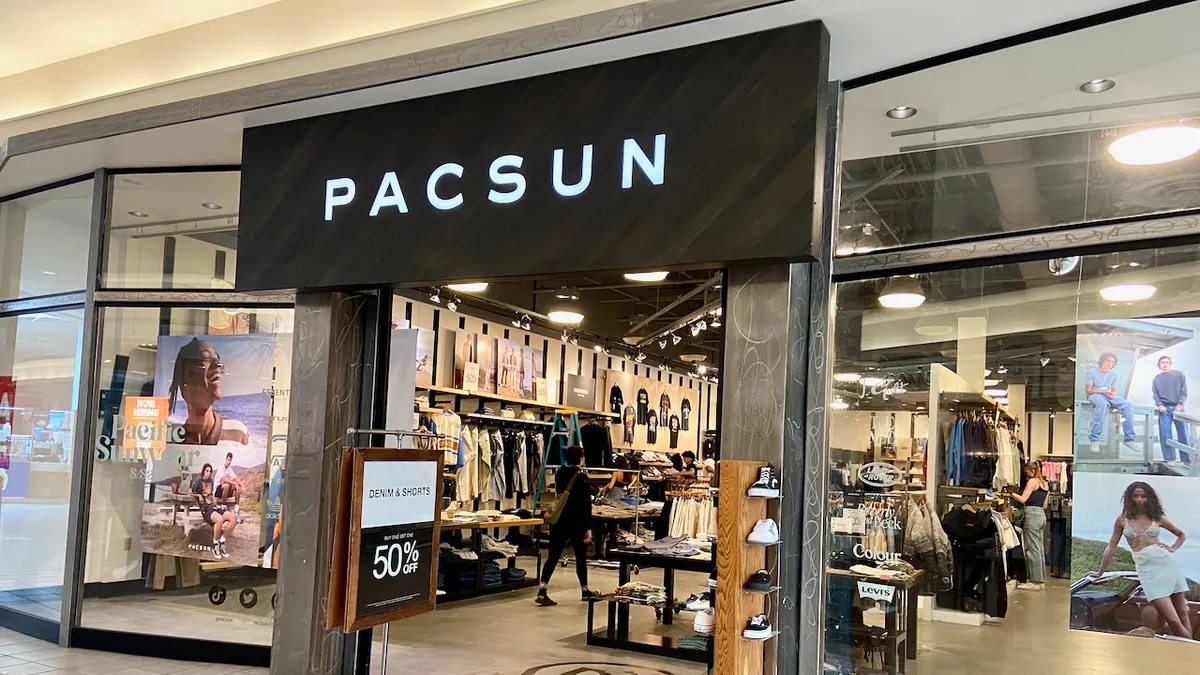Amazon is finally inching its way toward direct competition with FedEx and UPS with the relaunch of its Amazon Shipping service, and experts see both benefits and potential downsides for shippers considering the ground delivery offering.
The long-awaited push by the company into last-mile services outside of Amazon.com orders isn't yet a comprehensive answer for how to compete with traditional delivery giants. The ground shipping service for Amazon.com sellers offers delivery in two to five business days in the contiguous U.S. for orders placed on non-Amazon channels, per its website.
However, parcel industry observers say that Amazon Shipping's promise of straightforward rates without tacked-on fees and a speedy claims resolution process could make it an appealing alternative for small businesses.
“We’re always working to develop new, innovative ways to support Amazon’s selling partners, and Amazon Shipping is another option for shipping packages to customers quickly and cost-effectively," spokesperson Olivia Connors said in an emailed statement. "We’ve been providing this service for a while with positive feedback so we’re now making it available to more selling partners.”
Amazon previously offered the service in select cities before pausing it in 2020. But the relaunch marks a new chapter in the company's foray into parcel shipping, which could be far more disruptive for established delivery providers.
"This is not a test, it's not a trial, it's not a 'dip your toe in,'" said Nathan Hughes, president of Shipware. "It is a strategic, scaled rollout of this service in the marketplace."
How Amazon differs from other FedEx, UPS challengers
With pandemic-era capacity constraints a thing of the past, relaunching Amazon Shipping will help the company wring additional profit out of an expensive and expansive network.
"Every single package they bring on board is going to drive revenue that will help to subsidize the cost of their own operation," Marc Wulfraat, president and founder of MWPVL International, a consulting firm that tracks Amazon's logistics footprint.
This massive fulfillment operation is a key reason experts believe the company's emerging shipping service could pose a legitimate threat to FedEx and UPS. The two companies' current dominance in the parcel delivery sector is dictated by their expansive network infrastructure — warehouses, trucks, planes and people working to deliver packages in the U.S. and beyond — creating a barrier to entry few companies can even consider matching, Hughes said.
Amazon is one of the select few who could. The e-commerce giant is already a formidable player in terms of delivery activity, handling 4.8 billion deliveries last year, surpassing FedEx, according to the Pitney Bowes Parcel Shipping Index. In 2019, it handled less than half that amount.
Amazon has surged past FedEx in annual delivery volume
"It's now a major juggernaut that is different than what it was pre-COVID," said Caleb Nelson, chief growth officer and co-founder at logistics software provider Sifted.
Amazon Shipping's possible pros and cons
Amazon has released few details about Amazon Shipping beyond what's on its website, but industry observers say the service appears to be targeting small- and medium-sized businesses in the near term.
The service touts "simple rates," which would be particularly attractive to smaller merchants that often don't have the in-house expertise to understand a nuanced parcel shipping contract with FedEx or UPS.
If rates are as straightforward as Amazon claims they are, then some shippers may be able to accept transit times of up to five days and bring over some of their FedEx and UPS volume, Nelson said. The lack of a residential delivery surcharge is also a significant benefit, he added.
"For an e-commerce business, that's a home run and will substantially reduce the cost," Nelson said.
However, Amazon Shipping could have trouble attracting large-scale, enterprise shippers for several reasons, experts say. Potential concerns they flagged include:
- Losing volume-based discounts from other carriers if they shift packages to Amazon Shipping
- How Amazon handles the service's deliveries compared to Amazon.com orders in periods of tight capacity, such as during the holidays or a Prime Day sales event
- The service is unable to reach the entire U.S. population by itself. The company says it will use the U.S. Postal Service to cover all Amazon Shipping delivery destinations
- Fears of Amazon rolling back the service if interest isn't high enough
Amazon's service could also threaten to siphon volume from UPS at a time when it still relies heavily on the carrier to make some of its deliveries, though it has reduced its reliance on the carrier in recent years.
"They've got to walk a little bit gingerly right now, because they still ship a fair amount of volume through UPS," Wulfraat of MWPVL said.
In the short term, Amazon Shipping is unlikely to be a legitimate competitor to FedEx and UPS due to obstacles attracting enterprise shippers, said Ninaad Acharya, co-founder and CEO of Fulfillment IQ. Instead, the company could grab market share from smaller, e-commerce-focused delivery providers like Pitney Bowes and DHL eCommerce as it builds the foundation to compete against the established delivery giants in the long-term.
"I would never, ever discount anything that Amazon does," Acharya said. "I think a lot of people have learned that the hard way."
Editor's note: This story was first published in our Logistics Weekly newsletter. Sign up here.























